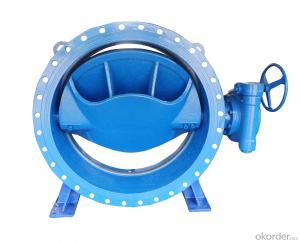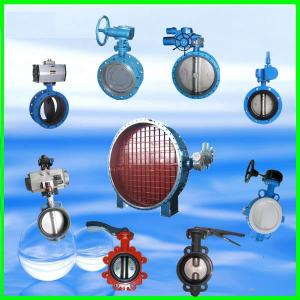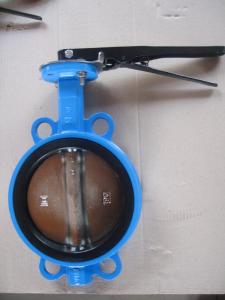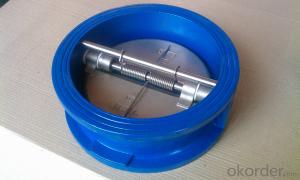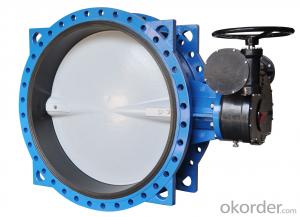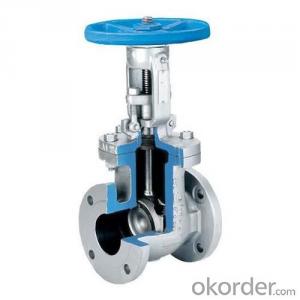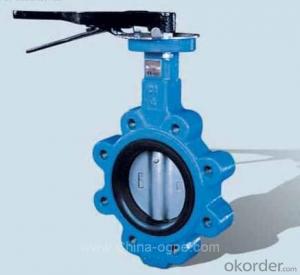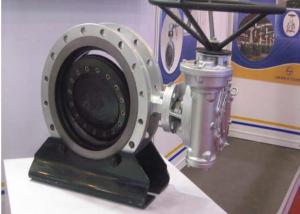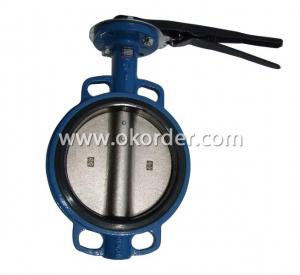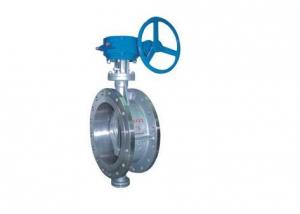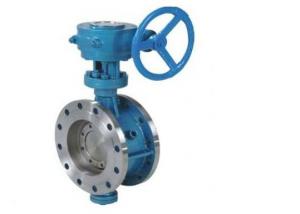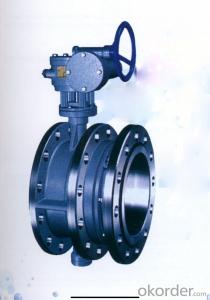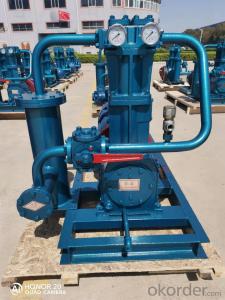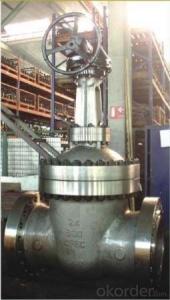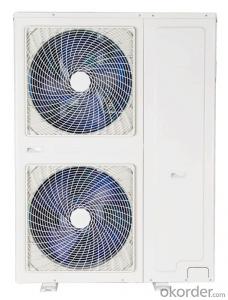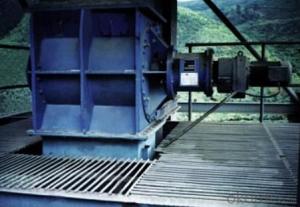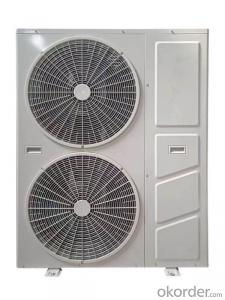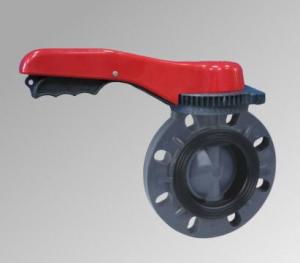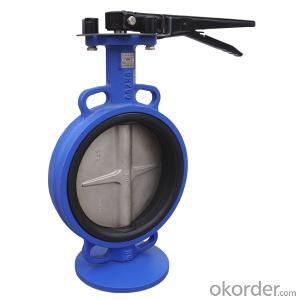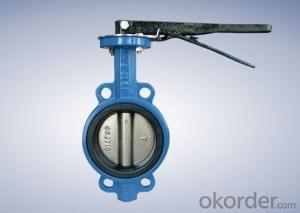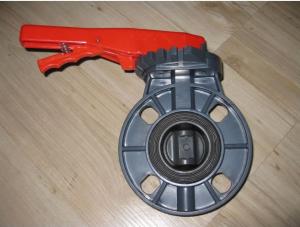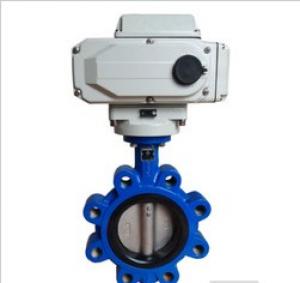valve of china 6000
- Loading Port:
- China Main Port
- Payment Terms:
- TT OR LC
- Min Order Qty:
- -
- Supply Capability:
- -
OKorder Service Pledge
OKorder Financial Service
You Might Also Like
Quick DetailsStandard or Nonstandard: Standard Structure: Gate Pressure: Medium Pressure
Power: Manual Material: Casting Temperature of Media: Medium Temperature
Media: Water Port Size: DN40mm-DN300 Place of Origin: China (Mainland)
Model Number: GF4 resilient gate valves: resilient seat flange
Packaging & DeliveryPackaging Detail: air plastic bag inside/wooden box outside
Delivery Detail: 15-60days
SpecificationsDIN3352 F4 resilient seat flange gate valves
1.size:DN40-DN300
2.medium:water
3.standard:DIN
4.certificate:ISO9001 CE
resilient gate valves
1.size:DN40-DN300
2.medium:water
3.certificate:ISO9001 CE
4.standard:DIN
available medium:water
working temperature:≤80oC
flange dimensions:DIN2501
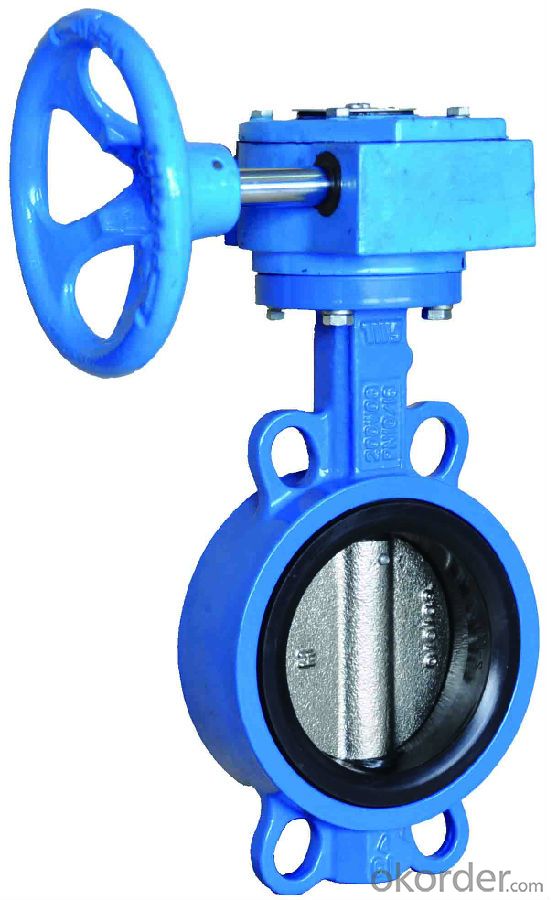
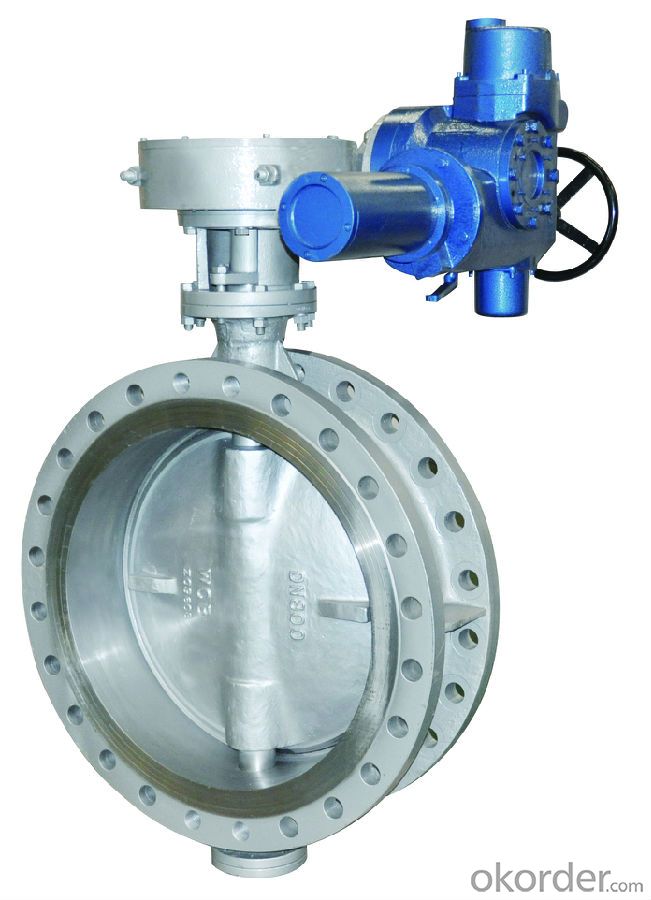
face to face dimensions:DIN3202F4.
- Q:How to connect the signal butterfly valve?
- If you mean the signal of fire water supply system, there are generally three outlets, one public, one open and one off. Fire control system signal butterfly valve is normally open, so the signal butterfly valve to open position, with a multimeter to measure the 2 lines, the 2 lines into the input module is fine.
- Q:I was wondering if someone could tell me the manufacturing date on this aircraft engine valve.
- Wow Hannah! That's a cool find for sure! It appears to be possibly a valve for a radial aircraft engine as it looks very similar to ones i've seen used in Pratt+Whitney R3350's etc. It looks like it could probably date to the 1940's up thru the 1950's. Look for a Part Number stamped on the valve or on the box. After WW2 there were all kinds of manufacturers making parts for airplanes. Many were gobbled up by competitors, converted to manufacturing other products or went out of business altogether. However, a few did hang on....and I think this may be what has become of Thompson Aircraft today.... Thompson Aerospace, Inc 22431 Antonio Parkway B160-102 Rcho Sta Marg, CA 92688-2804
- Q:i have a slightly small mitral valve leak in my heart. my cardiologist say nothing to worry about, but i am not sure. can some one explain if it would eventually lead to some complications?
- Mitral valve prolapse is the most common cardiac problem and may affect five to twenty percent of the population. The condition is most common in women, although men are also affected. With MVP, symptoms do not begin before the early teenage years (approximately age 14 in girls and 15 in boys), but adults of any age may be affected. MVP tends to run in families, so those with blood relatives with MVP have a greater chance of also having the condition. If a person has mild MVP, he/she needs no restriction of exercise. But if the MVP is big, then it is a different thing. Because, though complications in this condition are very less, people who suffer from this condition have to take extreme care. In case of large MVP, you may have to cut down on your physical activity, have a surgery and may be put you on medications like beta blockers. If the valve is truly defective (not just 'prolapsed'), it is serious. Unfortunately, doctors have mistaken a 'differently shaped' mitral valve as a disease in itself. And this is where the non-disease comes in. In simple terms, a mitral valve that appears prolapsed is usually normal. It still is not clear to experts why some mitral valves appear prolapsed and allow some blood leakage backwards. I have an answer for that phenomenon, but the important point is that the disease is a non-disease.
- Q:I am confused as to the answer of this question. Please help.Indicate the status of the mitral, tricuspid and semilunar valves (whether they are open or closd) during the various phases of the cardiac cycle. Discuss the pressure in each of the relevant chambers or blood vessels during the phases with reference to the opening or closing of the valves.
- A heartbeat is a two-part pumping action that takes about a second. As blood collects in the upper chambers (the right and left atria), the heart's natural pacemaker (the SA node) sends out an electrical signal that causes the atria to contract. This contraction pushes blood through the tricuspid and mitral valves into the resting lower chambers (the right and left ventricles). This part of the two-part pumping phase (the longer of the two) is called diastole. The second part of the pumping phase begins when the ventricles are full of blood. The electrical signals from the SA node travel along a pathway of cells to the ventricles, causing them to contract. This is called systole. As the tricuspid and mitral valves shut tight to prevent a back flow of blood, the pulmonary and aortic valves are pushed open. While blood is pushed from the right ventricle into the lungs to pick up oxygen, oxygen-rich blood flows from the left ventricle to the heart and other parts of the body. After blood moves into the pulmonary artery and the aorta, the ventricles relax, and the pulmonary and aortic valves close. The lower pressure in the ventricles causes the tricuspid and mitral valves to open, and the cycle begins again. This series of contractions is repeated over and over again, increasing during times of exertion and decreasing while you are at rest. The heart normally beats about 60 to 80 times a minute when you are at rest, but this can vary. As you get older, your resting heart rate rises. Also, it is usually lower in people who are physically fit.
- Q:Butterfly valve, two-way pressure and one-way pressure what is the difference?
- Popular, one point one pressure side, a double-sided pressure.
- Q:valve adjustment 2001 chev prism 1.8L
- valve adjustment . you need to know the fire order. the gage between the stem. rotators the cranshaft. it could be cold start. cylinder need to be bottomed center.
- Q:What's the difference between a butterfly valve and an eccentric butterfly valve? What is the difference in field applications?
- Avoid friction and wear on the sealing surface!And, at the time of closing, and opening the opposite, there is a better sealing effect! Now generally use eccentric butterfly valve as the main. That's all I know! If there is any mistake, please forgive me!
- Q:Butterfly valves are widely used in 2.0MPa below the pressure and temperature of not more than 200 degrees of various media, right?
- 3. kinds of butterfly valve:According to the connection mode: flange type, clip type.According to the material of sealing surface, soft seal and hard sealing.According to the structural form, butterfly valves can be divided into the following types:Plate typeInclined plate typeOffset plateLever type4. butterfly valve features:(1) the structure is simple and the shape is small. The utility model has the advantages of compact structure, short structural length, small size and light weight, and is suitable for large caliber valves.(2) the resistance of the fluid is small, and when the valve is fully opened, the valve seat passage has an effective circulation area, so the fluid resistance is smaller.(3) open and close, convenient and quick, good adjustment performance, butterfly plate rotation 90 degrees can be completed headstock. By changing the angle of rotation of the disc, the flow can be graded.(4) the opening and closing moment is smaller, because the butterfly plate on both sides of the rotating shaft is basically equal to the medium, and the opposite direction of the torque is generated, so that the opening and closing is more labor-saving.(5) low pressure sealing performance, sealing surface materials generally use rubber, plastic, sealing performance is good. Limited by the material of the sealing ring, the pressure and the temperature range of the butterfly valve are smaller. But the use of hard sealing butterfly valve pressure and temperature range has been greatly improved.
- Q:Today saw the butterfly valve and butterfly valve, I do not know what is the difference between the two
- How it works: the disc is driven by the stem, and if it turns 90 degrees, it can be opened and closed once. By changing the deflection angle of the plate, the flow of the medium can be controlled. The main sealing element is a sealing ring, and the material is selected according to the use and the medium.
- Q:How big is the butterfly valve with a diameter of 80?
- Generally speaking, especially small caliber, the butterfly valve will not use the variable diameter. Therefore, the butterfly valve DN and pound class selection, according to the field pipeline flange DN and pound level.So, in a strict sense, the caliber of the butterfly valve and the diameter of the pipe have not much relationship.Specific to your pipe diameter, there are questions: 80 diameter refers to the outer diameter or inside diameter? Yes, there is no flange on the site. Do you need a pair of flanges to be supplied?
1. Manufacturer Overview |
|
|---|---|
| Location | |
| Year Established | |
| Annual Output Value | |
| Main Markets | |
| Company Certifications | |
2. Manufacturer Certificates |
|
|---|---|
| a) Certification Name | |
| Range | |
| Reference | |
| Validity Period | |
3. Manufacturer Capability |
|
|---|---|
| a)Trade Capacity | |
| Nearest Port | |
| Export Percentage | |
| No.of Employees in Trade Department | |
| Language Spoken: | |
| b)Factory Information | |
| Factory Size: | |
| No. of Production Lines | |
| Contract Manufacturing | |
| Product Price Range | |
Send your message to us
valve of china 6000
- Loading Port:
- China Main Port
- Payment Terms:
- TT OR LC
- Min Order Qty:
- -
- Supply Capability:
- -
OKorder Service Pledge
OKorder Financial Service
Similar products
New products
Hot products


